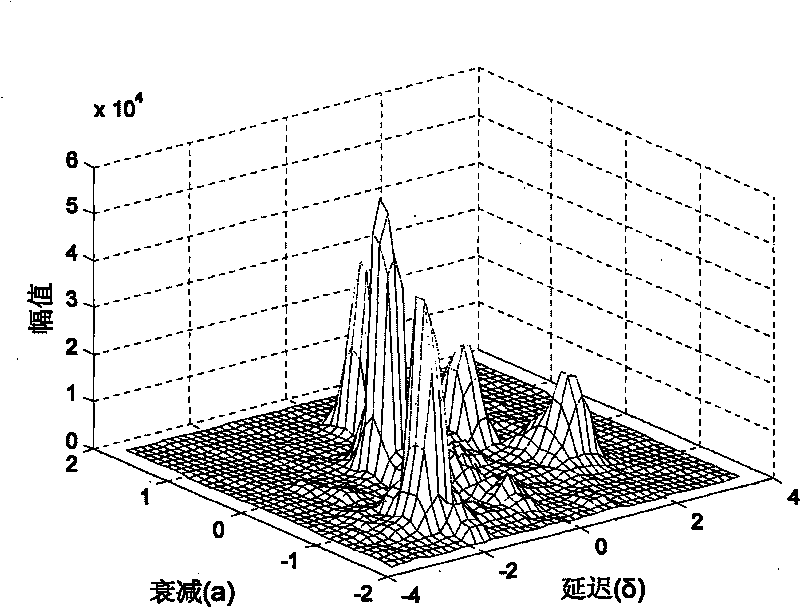Blind source separation method based on mixed signal local peak value variance detection
A local peak, blind source separation technology, applied in speech analysis, instruments, etc., can solve the problems of inaccurate parameter estimation of mixing matrix, low source signal estimation accuracy, and inability to effectively detect local peaks of signal attenuation.
- Summary
- Abstract
- Description
- Claims
- Application Information
AI Technical Summary
Problems solved by technology
Method used
Image
Examples
specific Embodiment approach 1
[0046] Specific implementation mode one: combine figure 1 In this embodiment, the blind source separation method based on the local peak variance detection of the mixed signal is realized based on the following system: the blind source separation system is composed of a mixing system and an unmixing system, and the source signal s j (t) and the noise signal v i (t) mixed in the hybrid system, the observed signal through the hybrid system is x i (t), observed signal x i (t) The estimated signal of the source signal separated by the unmixing system is
[0047] The specific steps of the blind source separation method based on local peak variance detection of mixed signals are as follows:
[0048] Step A, by observing the signal x i The relative attenuation and delay parameters of (t) draw the signal attenuation-delay histogram;
[0049] Step B. Traverse the x-axis and y-axis in the signal attenuation-delay histogram plane area Ω obtained in step A, and find all sub-areas Ω...
specific Embodiment approach 2
[0066] Specific embodiment 2: This embodiment further defines step C in specific embodiment 1. In step C, a threshold value threshold δ is set, and the peak sub-region Further screening, select the value a of the center point (i,j) Peak sub-regions greater than the threshold threshold δ Participate in subsequent calculations, that is, satisfy a (i,j) ≥δ peak subregion Participate in subsequent calculations.
[0067] In this embodiment, the threshold δ of the maximum value is manually adjusted and set by technicians according to the actual demand of the signal. Generally, the threshold δ is proportional to the maximum amplitude M in the signal attenuation-delay histogram. For example, the threshold δ of the maximum value in this embodiment can be selected
[0068] In this embodiment, according to the set threshold threshold δ, the peak sub-region After further screening, only the value a of the center point (i,j) It is the maximum value in this sub-region and the su...
specific Embodiment approach 3
[0069] Specific implementation mode three: this implementation mode is a further limitation of step E in specific implementation mode one, in step E, all peak sub-regions The variance of VAR k The method of sorting adopts the "bubble method".
PUM
 Login to View More
Login to View More Abstract
Description
Claims
Application Information
 Login to View More
Login to View More - R&D
- Intellectual Property
- Life Sciences
- Materials
- Tech Scout
- Unparalleled Data Quality
- Higher Quality Content
- 60% Fewer Hallucinations
Browse by: Latest US Patents, China's latest patents, Technical Efficacy Thesaurus, Application Domain, Technology Topic, Popular Technical Reports.
© 2025 PatSnap. All rights reserved.Legal|Privacy policy|Modern Slavery Act Transparency Statement|Sitemap|About US| Contact US: help@patsnap.com



